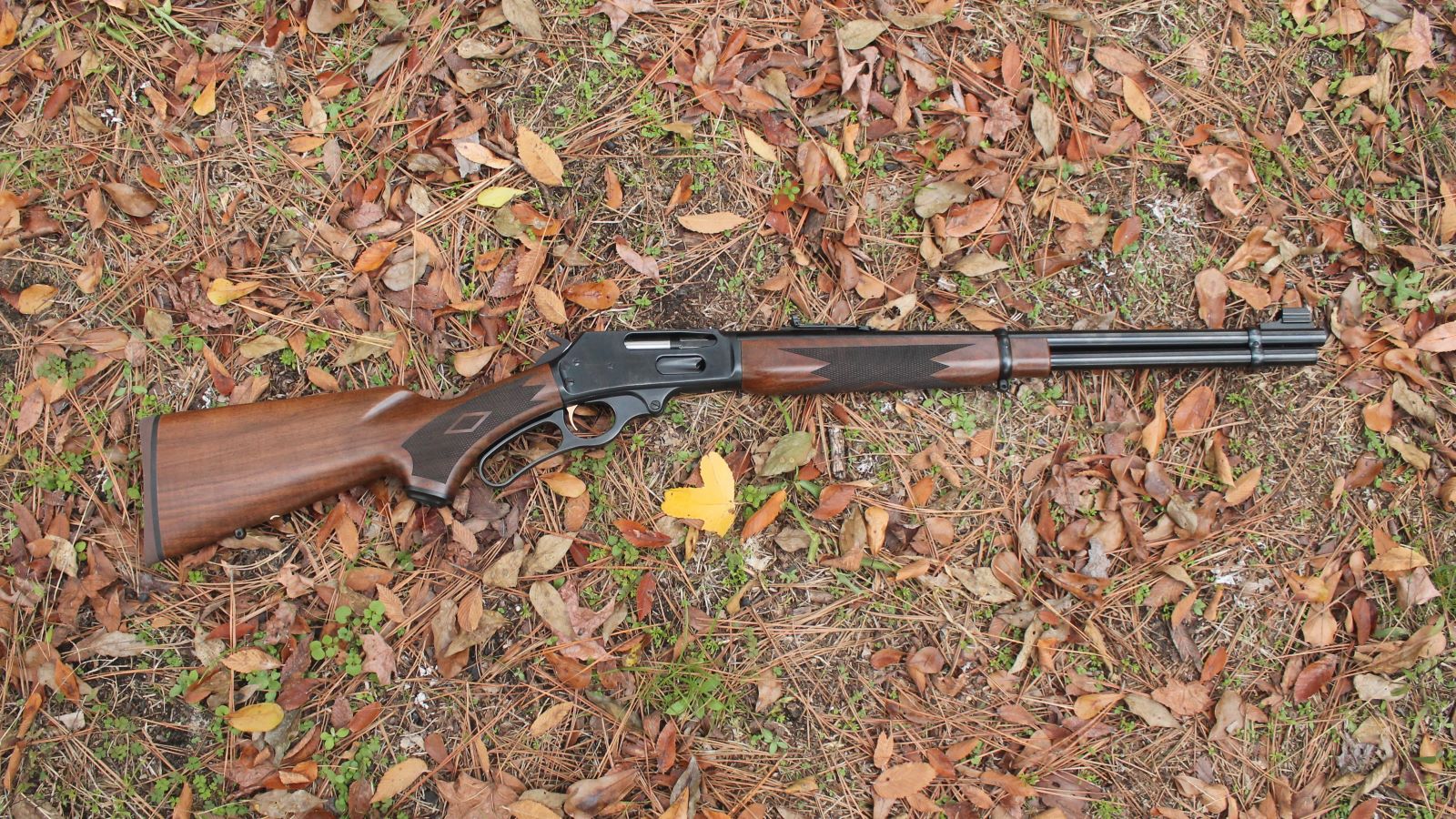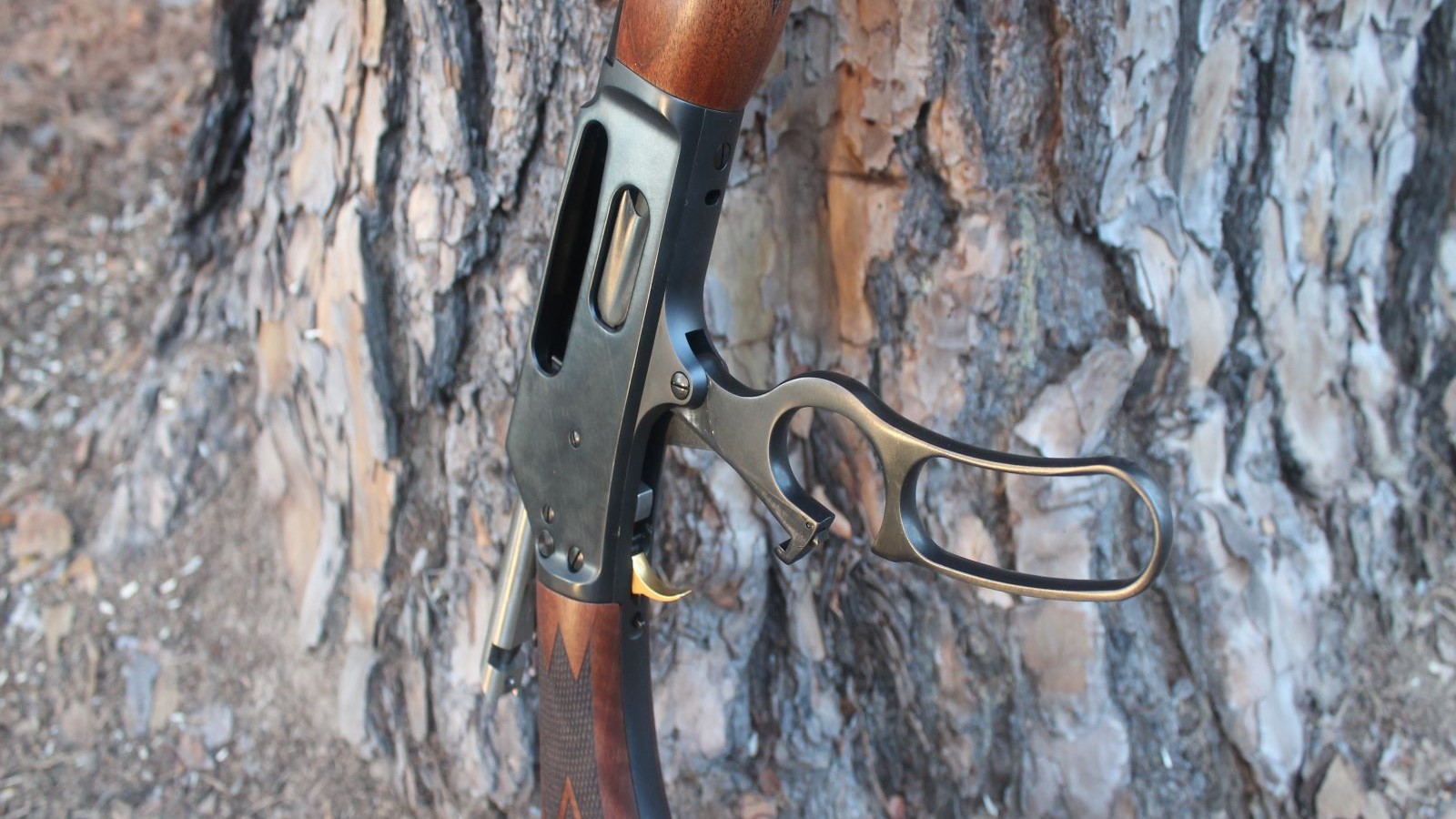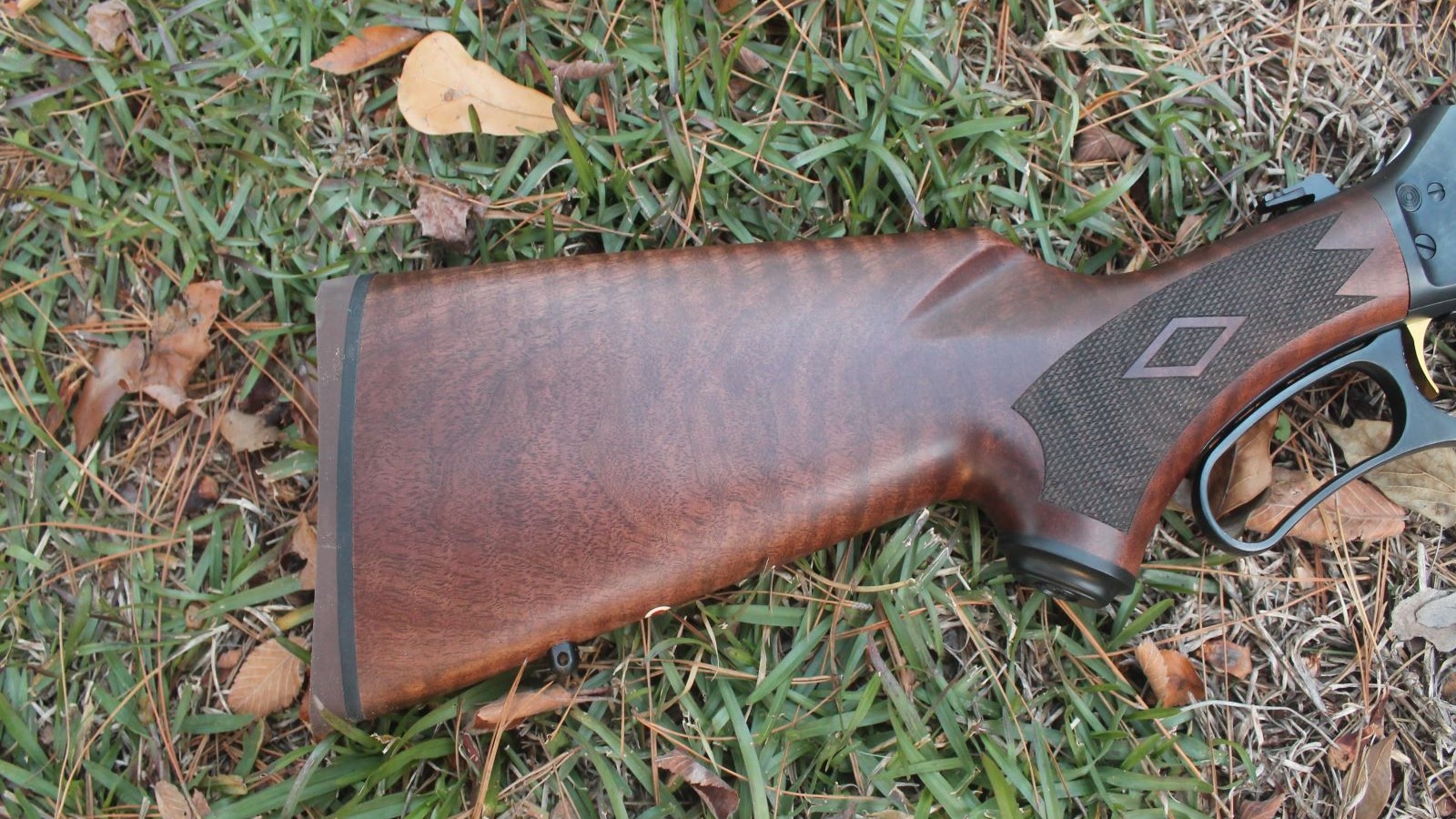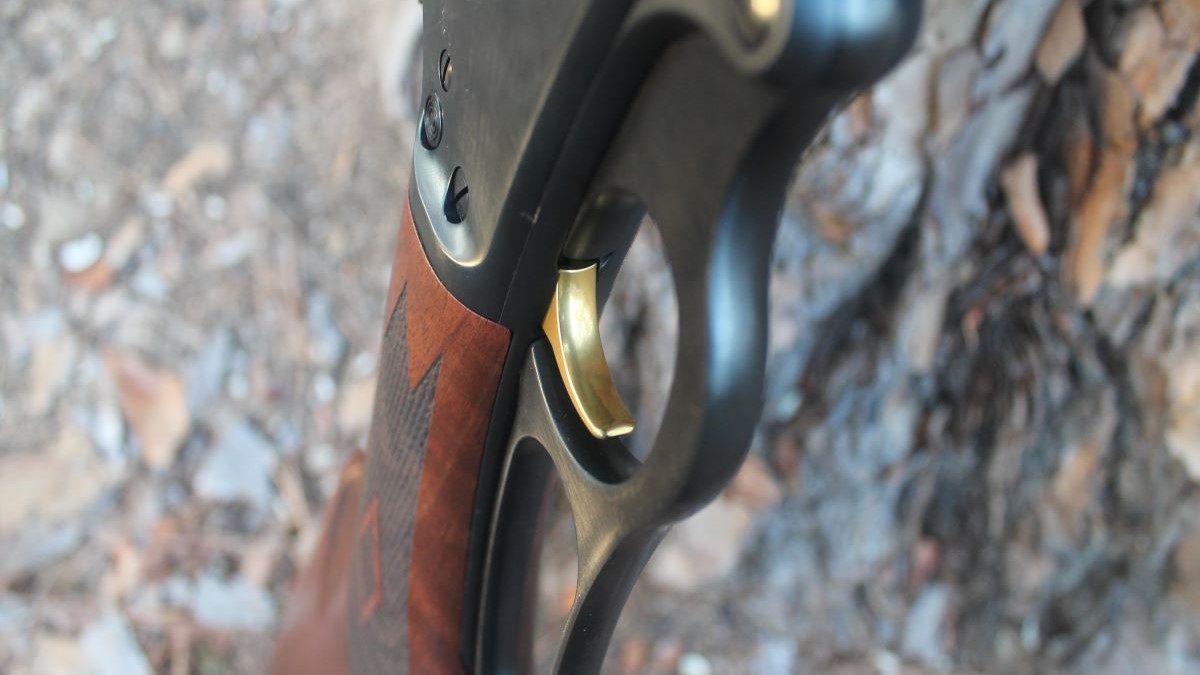When we published an article last year covering the best lever action hunting rifles, some of you accused us of making a serious omission. Where, you asked, was the Marlin Model 336?
You had a point. Marlin’s stable of lever-action rifles is legendary, and perhaps none more so than the Model 336. Like the Winchester 94, the Marlin 336 is most commonly chambered in .30-30 Winchester and has been a staple of the deer woods since its introduction in 1948.
Today, we’ll give the 336 the attention it deserves. Ruger acquired Marlin in 2020, and they’ve tweaked the classic design to make it more durable and reliable. If you’ve been coveting a 336 but haven’t pulled the trigger, now’s the time to do it (or, at least, to get on the waiting list).

Specs and Features
- Caliber: 30-30 Win
- Capacity: 6+1
- Stock: American Black Walnut
- Material: Alloy Steel
- Finish: Satin Blued
- Front Sight: Brass Bead with Hood
- Rear Sight: Semi-Buckhorn
- Weight: 7.5 lb.
- Overall Length: 38.625"
- Length of Pull: 13.38"
- Barrel Length: 20.25"
- Barrel: Cold Hammer-Forged Alloy Steel
- Twist: 1:12" RH
- Grooves: 6
- Suggested Retail: $1,239.00
Ruger-Made Marlin?
Lever-action fans know that Ruger bought Marlin from Remington when Big Green went bankrupt in 2020. Most observers hailed the move as a great thing. Customers had voiced dissatisfaction with Marlin’s quality control, and Ruger was seen as saving a much-beloved firearms brand.

But that’s easier said than done. When I spoke with Ruger product manager Eric Lundgren, he explained that spinning up Marlin’s production was a serious undertaking.
“When Ruger acquired Marlin, it did not purchase a robust operating company already making guns with experienced employees,” he said. Ruger acquired manufacturing machines, but only some of them were still operable in July of 2020. Lundgren and his team spent months evaluating the machines, refurbishing them, and training new employees to operate them.
At the same time, they analyzed each part of the 336 and looked for ways to improve.
“While not common, in the past, parts could be made to specification but would still result in functional problems. The design team here spent a lot of time adjusting the tolerance stack to be sure if parts were made to spec, the gun would always work,” Lundgren said.

So, how are Ruger-made Marlin Model 336’s different from previous generations? Here’s a list of improvements:
- Cold-Hammer Forged Barrel: Ruger moved the Marlin barrel-making process from broaching to hammer forging. The broaching process was old and didn’t result in clean grooves.
- Barrel Crown: The crown was changed from round to an 11-degree bevel.
- Barrel Shim: The barrel shim was removed. The current process does away with the shim and uses a laser monitored, automatic barrel torque machine that guarantees perfect alignment within a ¾ degree.
- Barrel Threads: The barrel threads were updated from square threads to V-threads.
- Recoil Distribution: In previous iterations of the 336, the energy from recoil was distributed throughout the inletted area on the stock and the tang (including the take-down screw). That would often result in wood chipping or sometimes cracking. Ruger made some minor changes to move the recoil energy to the interface between the receiver sides and the stock. That has eliminated chipping.
- Forend Improvement: The forends have been thinned out and the interface between the wood, the forend tenon and the forend cap has been fixed so that the forend can be removed and installed with little effort.
- Barrel Inscription: The barrel now reads “Mayodan, NC.” The serial number no longer starts with “MR” and now starts “RM” – or Ruger Made.
- Stock Bullseye: The black and white bullseye that was added to the stock near the swivel stud in 1922 was changed to red and white.
All this engineering has a predictable result: a rugged, well-built lever gun capable of pretty much anything you’d want a lever gun to do.

First Impressions
When you pull a 336 out of its box in a gun store, there is a 100% chance someone will say, “Now that’s a pretty gun right there.” The exact phrase might change depending on where you live, but the sentiment will be the same. The gun is a beaut.
The American black walnut stock pairs perfectly with the satin blued finish, and the stock on the one I received even sports a tiger-stripe pattern. The checkering on the wrist and forend provides extra purchase if the gun ever gets wet, and the thin recoil pad offers more than enough protection from the 11 ft.-lbs. of recoil doled out by the .30-30 cartridge. As Lundgren mentioned, the forend has also been thinned out to save a little weight and make the rifle easier to handle.


Compared to some other lever gun models, the 336 doesn’t have what I’d call a buttery smooth action. That holds true of these new Ruger-made Marlins as well, but it wasn’t enough to impede the function of the rifle. Throughout the course of my testing, I had no trouble loading, charging, and firing the rifle, and the lever action functioned precisely as it was supposed to. I also found that, as expected, the action became smoother the more rounds I put through it.
At 5.5 pounds, the trigger will feel heavy if you’re used to the break-glass triggers on most bolt guns these days. But I detected no creep or grittiness, and the break was clean and consistent. For a lever gun, it’s pretty damn good.

The rifle doesn’t come with a scope, but the receiver is drilled and tapped in the same location as previous iterations of the 336. That means it isn’t hard to find scope bases that fit, and my local gun store had several options in stock. Yours probably will, too.
Cross-Bolt Safety
If you spend any time reading about the Marlin 336 (or the Winchester 94), you’ll almost immediately run into someone complaining about the cross-bolt safety. Here’s why.
Rather than restrict the function of the trigger, the cross-bolt safety keeps the round from being discharged by blocking the hammer from impacting the firing pin. This allows the trigger to be pulled and the hammer to fall even when the safety is engaged.

Some complaints about this system stem from the fact that 336’s made prior to the 1980s did not have any kind of external safety. Those who grew up with a pre-80s 336 don’t like how the safety looks, and they also claim it’s unnecessary. In the field, the gun can be carried with a round in the chamber and the hammer on half-cock. The trigger can’t drop the hammer in that position, but the user can easily pull the hammer all the way back when ready to fire. Why, some ask, does the gun need an additional safety mechanism?
The cross-bolt system can also sow confusion. Because the safety allows the trigger to be pulled and the hammer to fall, it isn’t immediately obvious that the safety is on at all. It’s easy to assume that when the gun goes click but doesn’t go bang, the hammer isn’t striking the primer hard enough or that the primer is defective.
I was recently shooting a pair of 336’s with a friend, and he spent several minutes worrying that his gun was defective until he realized his safety was still on. Just a few days later, I made the same mistake. It didn’t take me long to recognize my error, but it’s an easy assumption to make.

I don’t know why Ruger chose to keep the cross-bolt safety on their new-and-improved version of the 336. I suppose it makes decocking the gun safer if you ever want to lower the hammer without unloading the gun first. It’s also nice to be able to flip on a safety at the range if you ever want to move positions with a cocked gun or pass the gun to someone else. But I think I’m with the old-timers on this one: the cross-bolt probably isn’t necessary.
At the Range
The Marlin Model 336 would be the belle of any ball, but can she dance? You bet she can.
It’s not the lightest lever gun at 7.5 pounds, but that extra weight soaks up recoil and makes it exceptionally pleasant to shoot. The consistent trigger helps keep shots on target, and I had zero problems with function or reliability.
Once you flip off the safety and shoulder the gun, you’ll see that the iron sights are rudimentary (as most iron sights are), but the rear sight can be easily adjusted for elevation and tapped one way or the other for windage. I found that these sights shot slightly to the left even at close ranges (about 30 yards). But I plan to use this gun primarily with a scope, so I wasn’t concerned. If I ever felt the need, it also wouldn’t be difficult or expensive for a gunsmith to correct the irons.
Lever guns are no great shakes in the accuracy department, but they’re not meant to be. The 336 is a quick-shooting, short-range gun that shines in the thick timber where shots are rarely longer than 100 yards.
Still, I don’t think I’m alone in feeling that, as a hunter, I need all the help I can get. I was curious to test various bullet weights and styles to see what this gun liked best. In my experience, any ammunition that shoots 1.5-inch 100-yard groups out of a lever gun is a solid performer. I’m sure some folks have owned lever guns that shoot smaller groups, but on average you should lower your expectations from what you’ll get from a modern bolt gun.
| Ammo | Federal 150g PowerShok | Hornady 140g Monoflex | Hornady 160g FTX | Fiocchi 170g InterLock |
|---|---|---|---|---|
| Average Group (in) | 1.56 | 1.94 | 1.78 | 2.13 |
| Small Group (in) | 0.9 | 1.5 | 1.6 | 1.75 |
| Average Velocity (fps) | 2481 | 2471 | 2360 | 2183 |
As you can see, Federal’s 150-grain PowerShok load was the top performer. It averaged a 1.5-inch group and even posted one sub-MOA group. If I thought I might shoot much past 100 yards, I’d also consider the 160-grain Hornady loads. Those use Hornady’s LeverEvolution bullets, which drop a little less and tend to retain more velocity and energy than traditional flat-nosed lever gun bullets.
Last Shot
I’m stoked to go after deer with this gun in the fall (and pigs until then). My local public parcels are almost entirely wooded, and the private land I have access to is the same. The Marlin Model 336 Classic is tailor-made for that kind of landscape. Its short overall length is handy in dense undergrowth and among the foliage in a tree stand, and the .30-30 is a proven deer killer within 100 yards or so.
Plus, lever guns are just cool. We gun nuts try to be objective and scientific in our assessments, but the truth is, the cool factor plays a larger role than we sometimes want to admit. And that’s OK. Life is about more than tiny groups and glass-break triggers. If the gun you carry into the woods makes you feel good, whether because your grandfather gave it to you or because you love John Wayne movies, that’s reason enough to love it.




